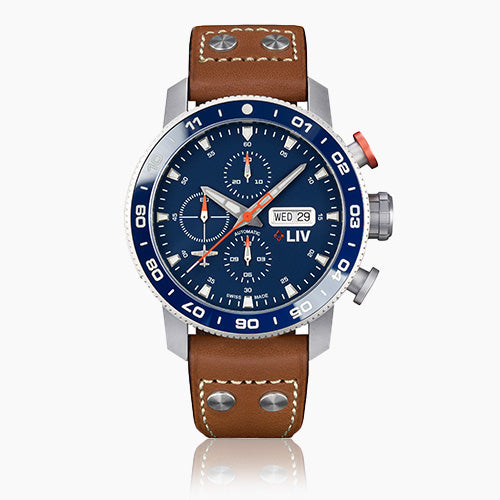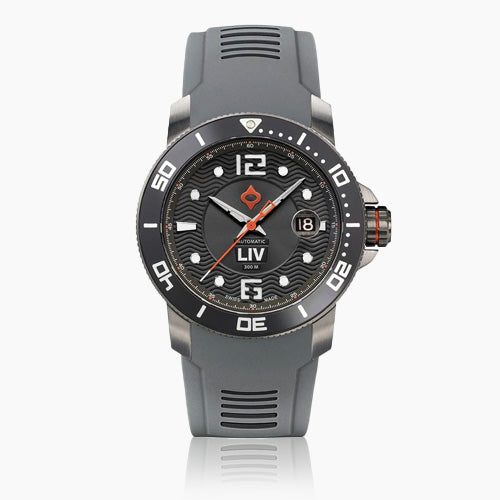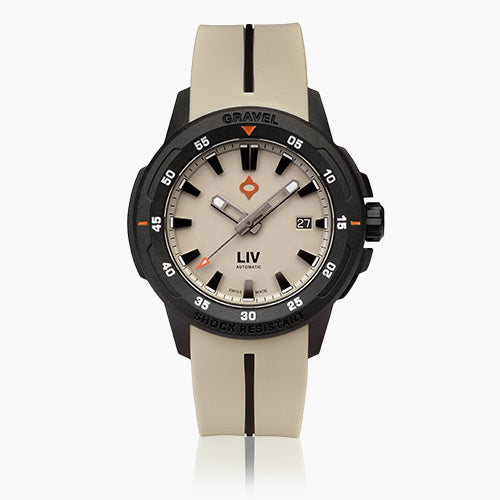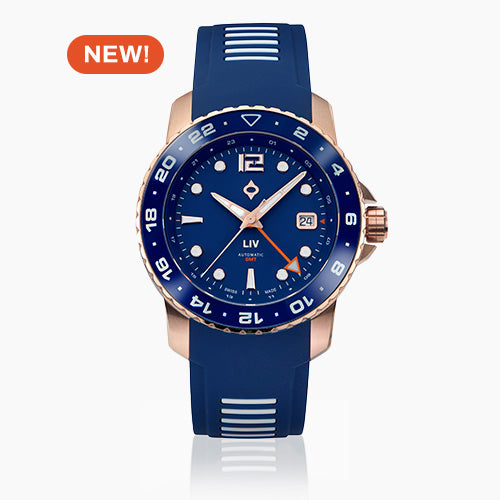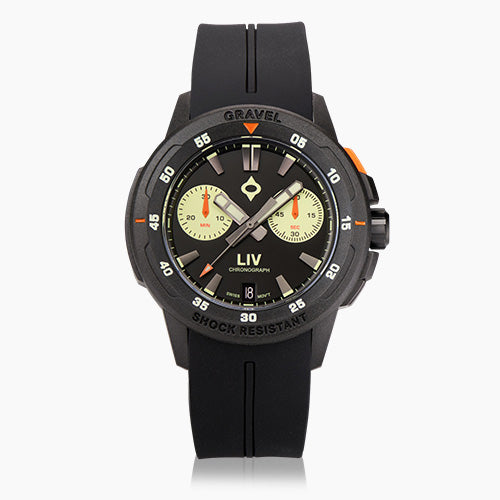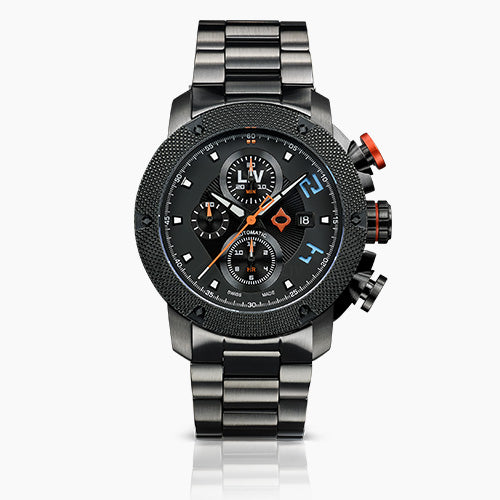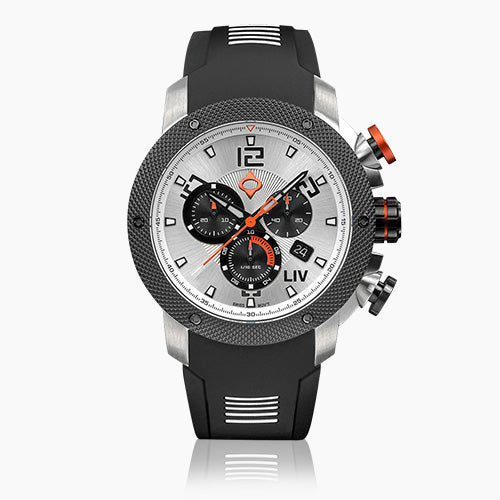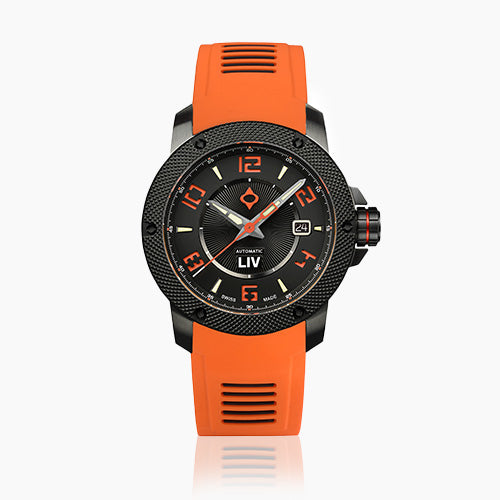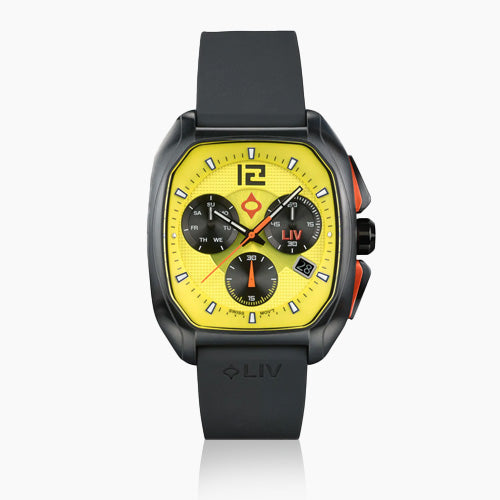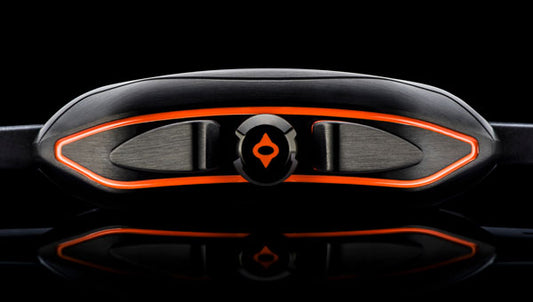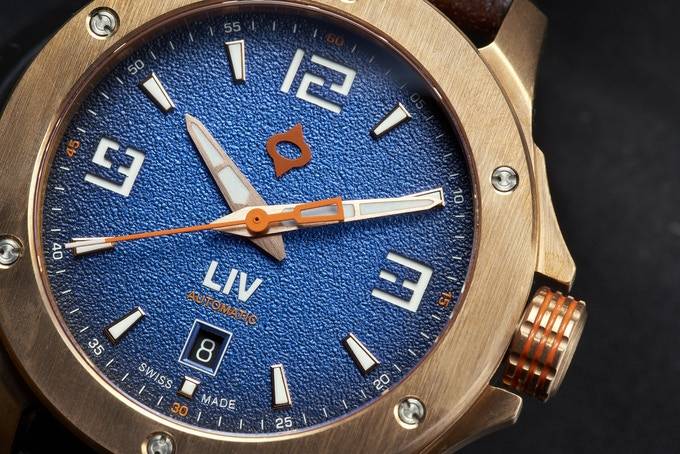
LIV Ushers in the New Bronze Age
Share
LIV is helping usher in the new bronze age
Bronze is making a comeback, at least in the watch world. And, LIV is at the forefront, bringing our unique take on design and materials to fans, watch freaks, and collectors everywhere with our fifth, that’s right, number 5, Kickstarter campaign.
This campaign is a tribute to the Saturn V missions that took mankind to the surface of the Moon. The Moon Dust Automatic, one of the two watches in the campaign, is available with a specially formulated bronze case (more later). LIV is taking bronze to outer space! Okay, figuratively, but it’s still cool!
Did someone say bronze?
Never heard of bronze as a case material? Well, you are not alone, even though the first documented pocket watch from 1577 had a bronze case. That makes sense as stainless steel, and other common case materials, were still a few hundred years or so away.
Copper would have been too soft, and precious metals brought along their own set of limitations.
Why the interest today? Patina, baby, it’s all about the patina.
"A watch is only as good as its movement, the mechanism that powers its functions. We’ll equip each Saturn V watch with an exceptional mechanical or quartz Swiss movement. We’ve personally sourced these from only the best Swiss movement makers. Once in our Swiss workshops, we’ll meticulously inspect and fine-tune each movement, adjusting our mechanical movements in as many as five positions to an accuracy up to +/- 4 seconds per day. This unrelenting focus on precision will translate into a flawless performance on your wrist."
- Chaz Chazanow
Co-Founder at LIV Watches
Fun facts about bronze
 Bronze is a remarkable material, so much so that it has its own historical period named after it, the Bronze Age. Bronze was the hardest known metal at the time, and it helped advance humankind towards a civilized life. In its most common form, bronze is an alloy of copper (88%) and tin (12%). The proportions vary considerably, and bronze makers often included other elements to meet their specific purposes.
Bronze is a remarkable material, so much so that it has its own historical period named after it, the Bronze Age. Bronze was the hardest known metal at the time, and it helped advance humankind towards a civilized life. In its most common form, bronze is an alloy of copper (88%) and tin (12%). The proportions vary considerably, and bronze makers often included other elements to meet their specific purposes.Before timepieces were available, bronze could still fulfill a timekeeping role in the form of sundials. Wearing these on your wrist was cumbersome, to say the least.
A tin shortage from about 1200 - 100 BC forced people to seek other metals, and the Bronze Age came to an end.
Bronze, meet titanium
Fast forward to modernity, and the once pre-eminent metal is showing up on wrists around the world. It is still relatively uncommon, but LIV is pairing the noble bronze with space-age titanium in another inspired design as part of the latest LIV Kickstarter campaign.

Bronze, like copper, is anti-microbial by itself. This means that germs, bacteria, and other microscopic nasties die after a short encounter with bronze. These days that is a nice perk. However, people who have a sensitivity to metals may experience that same sensitivity with pure bronze.
Here’s the genius of the LIV design, utilize a titanium bronze alloy for the case. Titanium is so inert; it makes an ideal medial implant material, like our other case material, 316L stainless steel. Smelt titanium in with bronze, and presto, a bronze that people with metal allergies can better tolerate.
Titanium also adds durability and strength to the bronze. The resulting alloy possesses an extremely fine crystalline structure that takes to precision machining and hand-finishing like a fish to water.
"Our Moon Dust automatic watches will be made from bronze combined with Space Age titanium. We'll then hand polish each case to a pristine finish. Our signature multilayered dials will incorporate elaborate modern and time-honored finishes and textures. The dial will feature a moon dust pattern on the upper ring, accented by large, hand-applied indexes with generous amounts of BGW9 Swiss Super-LumiNova."
- Esti Chazanow
Co-Founder at LIV Watches
How bronze forms a patina
LIV watches are crafted for individuals, people who want something unique and yet timeless. What better material to enhance the uniqueness of your LIV watch than bronze? Bronze will develop a unique patina, yours and yours alone, as you wear and enjoy it.
What is a patina, anyway? Patina is oxidization, the result of the chemical interaction between the metal and other agents, acids, bases, weather, and so forth. Consider it bronze’s rust. You can also consider it a protective layer as patinas tend to shield the underlying metal and slow down total deterioration. Think of all the ancient copper roofs you see across Europe and other parts of the world.
Copper was selected for its incredible life span, thanks in part to its lovely pale green patina.
What do you need to do to get your LIV patina going? Nothing, just wear and enjoy your new favorite Moon Dust Automatic. Over time, your case will react with your body chemistry and local environment, creating a patina unique to you both.
NOTE: Some people reactive adversely to different types of metal. Even though the Moon Dust Automatic Bronze reduces the potential for irritation, if you have ever reacted to metals, choose wisely. Be adventurous, but not reckless!

Restoring your original luster
So, let’s say you develop a longing for the original look of your LIV watch. How do you shed the patina you’ve crafted? For rusty steel, sandblasting is often the best solution: that and all manner of abrasive alternatives. Fortunately, you do not need to (nor should you) go to that extreme. Besides, sandblasting would void the warranty, among other things.
Here’s the drill to return your bronze to a like-new appearance:
Before you get started, remove the strap and make sure that the crown is fully closed. Since you'll be using water, you don't want any moisture getting in and damaging the internal precision parts.
Step 1: Take the watch head, immerse it in warm water, and place it to the side.
Step 2: Create a cleaning paste by mixing two tablespoons of baking powder with lemon juice.
Step 3: Cover the bronze-titanium with the paste and rub it in using a toothbrush to get to hard-to-reach spots. If you don't have a toothbrush, no worries, you could just use your fingers.
Step 4: Let the watch sit in the paste for about 20 minutes.
Step 5: Rinse the paste off with warm water, and then use a microfiber cloth to dry the watch thoroughly. And check that out, what a bronze beauty!
Restoring Of The Bronze from LIV watches on Vimeo.

Behind the piece
